 UPDATED REVIEW – April 3, 2024 | Roland DP603 Digital Piano | Roland is known for producing some great musical instruments including digital pianos, synthesizers, guitar products, percussion, recording & audio equipment, and the list goes on. Many pro players as well as institutions own Roland digital pianos and Roland produces some good ones.
UPDATED REVIEW – April 3, 2024 | Roland DP603 Digital Piano | Roland is known for producing some great musical instruments including digital pianos, synthesizers, guitar products, percussion, recording & audio equipment, and the list goes on. Many pro players as well as institutions own Roland digital pianos and Roland produces some good ones.
 Is this Roland DP603 piano a good choice? There are many things I can point out that should give a piano shopper good reasons to buy this piano although it does have a lot of competition out there. But before I go on further, I want to point out that Roland has had a line of traditional home style digital pianos for many years and a current model called the HP704 has the same digital technology, functions, key action, and pedaling as is in the DP603.
Is this Roland DP603 piano a good choice? There are many things I can point out that should give a piano shopper good reasons to buy this piano although it does have a lot of competition out there. But before I go on further, I want to point out that Roland has had a line of traditional home style digital pianos for many years and a current model called the HP704 has the same digital technology, functions, key action, and pedaling as is in the DP603.In fact the DP603 is a less expensive version of the current model HP704 home cabinet digital piano which is found at local US Roland piano dealers and not for sale on-line in the US. The HP704 sells for $3750 store discount price in Roland piano stores but comes with a premium duet size bench, much longer warranty, and the home pianos included an accessory package at no charge. The DP603 also has fewer technology features than the HP704 but the key action, piano sound engine, and pedaling are the same between those 2 models
 Roland has created a key action unlike anything they have done before. Each key consists of a combination of thin wood strips of wood which is applied to the plastic interior of the key to get it a nicer appearance as the keys are going up & down. Roland’s claim is that these new keys give the key structure more durability and more rigidity (with the addition of an inner stabilizer pin which also reduces lateral key movement) while allowing the action to feel more authentic.
Roland has created a key action unlike anything they have done before. Each key consists of a combination of thin wood strips of wood which is applied to the plastic interior of the key to get it a nicer appearance as the keys are going up & down. Roland’s claim is that these new keys give the key structure more durability and more rigidity (with the addition of an inner stabilizer pin which also reduces lateral key movement) while allowing the action to feel more authentic.In other words, the  key is mostly plastic and just a bit of wood which is not the way it is in other pianos but Roland would claim this is the best way to produce a key in a digital piano. I personally don’t know if it’s the best way to make a key and I doubt that the small amount of wood in the key does too much other than look nice, but as long as the keys move smoothly, are balanced well, and are graded weighted in a satisfying way, then that’s what I look for, and I believe this new key action called the PHA50 does all that for most people. It is an upgrade to the previous key actions called the “Premium Action” which Roland had in their previous DP90e. Although I always felt that the Premium Key Action was enjoyable to play, this PHA50 action is even more so and I did notice some upgraded advantages.
key is mostly plastic and just a bit of wood which is not the way it is in other pianos but Roland would claim this is the best way to produce a key in a digital piano. I personally don’t know if it’s the best way to make a key and I doubt that the small amount of wood in the key does too much other than look nice, but as long as the keys move smoothly, are balanced well, and are graded weighted in a satisfying way, then that’s what I look for, and I believe this new key action called the PHA50 does all that for most people. It is an upgrade to the previous key actions called the “Premium Action” which Roland had in their previous DP90e. Although I always felt that the Premium Key Action was enjoyable to play, this PHA50 action is even more so and I did notice some upgraded advantages.
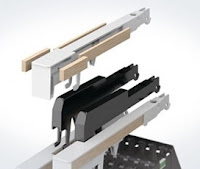 It is definitely worth mentioning that the new PHA-50 key action is on many of the new Roland models for 2023 in the higher price ranges as well as these 2 models here. However, Roland does have a noticeably better “grand Keyboard” model in their top digital upright pianos, but they are definitely more money. Kawai and Yamaha digital pianos also have their best upgraded key actions in their more expensive models.
It is definitely worth mentioning that the new PHA-50 key action is on many of the new Roland models for 2023 in the higher price ranges as well as these 2 models here. However, Roland does have a noticeably better “grand Keyboard” model in their top digital upright pianos, but they are definitely more money. Kawai and Yamaha digital pianos also have their best upgraded key actions in their more expensive models.
 This newer Roland key action also has the “escapement feature” which tries to simulate the movement of grand piano keys when you press them down slowly and easily and you feel them slightly hesitate or have a notch or bump that occurs as you press the key down. This type of feeling is a natural occurrence on a real grand piano but you cannot feel it on most upright pianos. It can help with key control when playing music slowly.
This newer Roland key action also has the “escapement feature” which tries to simulate the movement of grand piano keys when you press them down slowly and easily and you feel them slightly hesitate or have a notch or bump that occurs as you press the key down. This type of feeling is a natural occurrence on a real grand piano but you cannot feel it on most upright pianos. It can help with key control when playing music slowly. Kawai also has the escapement feature which they call “let-off” and that key action is in the new Kawai ES920 and all of their other digital pianos in this price range.
Yamaha does offer the escapement key action feature but only in their full size cabinet pianos starting with the Clavinova CLP-725 at around $2000. But just because the feature (escapement/letoff) may be there doesn’t mean it’s working well or is necessarily authentic, because at the end of the day these things are just simulations and if you played a real grand piano that function would feel very different. So the bottom line is that it’s nice to have it in these digital pianos but it’s not really necessary in my opinion because it’s only a simulation.
Another thing I noticed about the Roland key action was how quiet it was as compared with their previous models when the keys are moving up and down. By nature, regular acoustic piano key actions do make some noise when the keys are moving, but because those pianos are always so loud and they don’t have a volume control or headphone jack like digital pianos do, you cannot hear the key action noise when playing the piano. However in a digital piano, when you have the volume somewhere between low to medium level or when you are using headphones, then you can definitely hear the key action moving and noise is more of a concern. I can say for sure that the key action noise level on these new Roland pianos is the lowest that it’s been on any Roland digital piano and has surpassed the previous models for an even lower key movement noise reduction level.
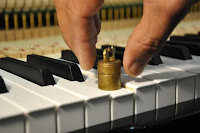 The previous models were already pretty good and more most people were satisfied with the fairly low ambient noise level of the moving keys. But the PHA50 key action has definitely surpassed this and has become quieter and smoother in key movement and this is something that I think many people will appreciate, especially if you play at a higher skill level or you use headphones a lot. Gone are the days on older model Roland key actions when all you could really hear were the “thump” of the keys going down.
The previous models were already pretty good and more most people were satisfied with the fairly low ambient noise level of the moving keys. But the PHA50 key action has definitely surpassed this and has become quieter and smoother in key movement and this is something that I think many people will appreciate, especially if you play at a higher skill level or you use headphones a lot. Gone are the days on older model Roland key actions when all you could really hear were the “thump” of the keys going down.When you combine this new Roland hybrid key with the quieter, smoother graded-weight (quick response) key movement along with good key action “down weight” & “up weight” return (measured by actual weights – left pic), you really feel like you can express yourself in a more authentic musically correct way as compared with previous models, at least that’s the way that I felt about it when playing this key action. Then you add the escapement feature in the key action that I talked about along with Roland proprietary synthetic ivory & ebony feel keys (they do feel good), and the Roland company has really stepped up to the plate by improving upon what they already had in the previous models. This key action is not a major breakthrough in my opinion compared to previous models, but I believe that beginners through advanced players will appreciate it very much.
 When it comes to piano sound and getting as close to approximating or matching a real acoustic piano, there is no digital piano that can exactly reproduce a real acoustic grand piano sound regardless of what anyone else may say. It simply has never been done and no digital piano brand can rightly claim that they have done it. So the next best thing is “how close can a digital piano get to a real acoustic piano sound playing experience?” If you knew how complex a real acoustic piano sound actually is and what is actually happening in a good grand piano when it comes to the piano sound itself (what it does and how you hear it), you would probably think it would be impossible to recreate it digitally.
When it comes to piano sound and getting as close to approximating or matching a real acoustic piano, there is no digital piano that can exactly reproduce a real acoustic grand piano sound regardless of what anyone else may say. It simply has never been done and no digital piano brand can rightly claim that they have done it. So the next best thing is “how close can a digital piano get to a real acoustic piano sound playing experience?” If you knew how complex a real acoustic piano sound actually is and what is actually happening in a good grand piano when it comes to the piano sound itself (what it does and how you hear it), you would probably think it would be impossible to recreate it digitally.
This is because there are certain piano sound elements that happen in “real time” that are always changing depending on how fast or slow you play the keys, how hard or soft you hit (play) the  keys, the type of wood the piano is made of, how much soundboard space you have in the real piano, the types of hammers and key felt that is part of the key action, the vibrations and overtones of the 230 strings (give or take) in a real grand piano and how they all interact with each other including the random vibrations, sympathetic noises, frequency changes, tonal dynamics, string thickness, string windings and materials, the scale design, the piano iron frame, dampers and their affect on the sound, decay and sustain time of the sustained strings, volume, duration of the tone and changes in velocity, among other things.
keys, the type of wood the piano is made of, how much soundboard space you have in the real piano, the types of hammers and key felt that is part of the key action, the vibrations and overtones of the 230 strings (give or take) in a real grand piano and how they all interact with each other including the random vibrations, sympathetic noises, frequency changes, tonal dynamics, string thickness, string windings and materials, the scale design, the piano iron frame, dampers and their affect on the sound, decay and sustain time of the sustained strings, volume, duration of the tone and changes in velocity, among other things.
Even the the style of music you play such as chording, voicing of chords, staccato and legato of the notes, and the interaction of the string vibrations on the body of the piano all contribute to the final outcome of the sound. Not only are the key action elements quite complex in a real acoustic piano, but in a lot of ways the piano sound is even more complex and trying to get that “perfect” reproduction which people are looking for in a digital piano is very difficult given the current technology that most digital piano companies are using.
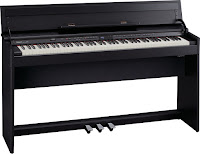 |
| previous model DP90e |
For a large majority of people playing piano these days and regardless of skill level, the piano sampling technology has produced some very enjoyable piano sound in digital pianos and this technology has gotten better and more sophisticated with time, and the end result is some mighty impressive digital piano instruments that have recently come out from the other brands. Along with increasing sampling sophistication also has come increased polyphony in sampled digital pianos up to 256-notes. This means that when playing a digital piano, if you are at a higher skill level and play complex musical passages using a stereo piano sound, you won’t run out of notes as you play your music using many keys and pedal sustain at one time along with doing glissando’s, arpeggios, and or lots of chording. So when it comes to piano sound, the digital piano industry has come a long way in being able to reproduce it with sampled recording so that most people can be very happy with the results, depending on your budget and the brand of piano of course:)
 However, Roland has now introduced a newer sound technology for the DP603 called SuperNATURAL piano Physical Modeling. Modeling (aka: modelling) is different from sampling in the way the sound is created and the way you hear it when the piano is being played. Along with this technology being implemented to create an all new piano sound, Roland is putting it in all of their new models. This means that you can get this newer technology of piano sound reproduction starting at around $3300 in their cabinet models. So exactly what is SuperNATURAL Modeling technology and what makes it different then other digital pianos?
However, Roland has now introduced a newer sound technology for the DP603 called SuperNATURAL piano Physical Modeling. Modeling (aka: modelling) is different from sampling in the way the sound is created and the way you hear it when the piano is being played. Along with this technology being implemented to create an all new piano sound, Roland is putting it in all of their new models. This means that you can get this newer technology of piano sound reproduction starting at around $3300 in their cabinet models. So exactly what is SuperNATURAL Modeling technology and what makes it different then other digital pianos?
In Sampling technology, the sound elements in a real piano need to be recorded with microphones, as I previously mentioned, and then those recordings need to be translated into computers and then saved in the digital piano sound chips on circuit boards. The recordings can be of a number of different things in a piano including the sound reproduction as you strike a key at different velocities and the noise the hammer makes when it moves, just to name a few. Sampled sounds take a larger amount of computer memory to do it correctly (or as close as can be done), and that may or may not drive up the cost of those instruments.
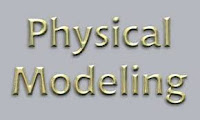
Physical Modeling sound is not recorded from an acoustic piano but is created through non sampling computer mathematical algorithms. I am definitely not a mathematician so the best explanation I found on the subject which I believe is important to understand (at some level) so that you can appreciate this new piano sound technology, is as follows: “In sound synthesis, physical modeling synthesis refers to methods in which the waveform of the sound to be generated is computed by using a mathematical model or formula, being a set of equations and algorithms to simulate a physical source of sound, usually a musical instrument. Such a model consists of laws of physics that govern the sound production, and will typically have several parameters, some of which are constants that describe the physical materials and dimensions of the instrument, while others are time-dependent functions that describe the player’s interaction with it, such as plucking a string, or covering tone-holes.
For example, to model the sound of a drum, there would be a formula for how striking the drumhead injects energy into a two dimensional membrane. Thereafter the properties of the membrane (mass density, stiffness, etc.), its coupling with the resonance of the cylindrical body of the drum, and the conditions at its boundaries (a rigid termination to the drum’s body) would describe its movement over time and thus its generation of sound.” That’s the explanation I found that best explains this technology although if you don’t understand it…don’t worry, a lot of other people don’t either:).
 In piano sound physical modeling, that technology is dealing with things such as the energy/force you put into the playing the keys, the interaction of the tonal dynamics, piano hammers, felt movement on the hammers, string movement over time, overtones that excite other moving and non-moving parts of the strings and wood cabinet, and many more physical aspects of a real acoustic piano.,..and all of these physical properties in a real piano are recreated by computer computations.
In piano sound physical modeling, that technology is dealing with things such as the energy/force you put into the playing the keys, the interaction of the tonal dynamics, piano hammers, felt movement on the hammers, string movement over time, overtones that excite other moving and non-moving parts of the strings and wood cabinet, and many more physical aspects of a real acoustic piano.,..and all of these physical properties in a real piano are recreated by computer computations.
It’s like a powerful computer that draws a “virtual picture” of every aspect of the best acoustic grand piano possible and then that “virtual picture” instantly comes to life as that actual acoustic piano played instantly in micro seconds with no repetition or sameness. This technology is supposed to give you the feeling that the piano sound which you’re hearing is being generated from an real acoustic piano, when in fact is is all done in the virtual technology world. But does this new technology actually do what it claims to do? Given all my years of experience playing top name acoustic Concert Grand Pianos and knowing what they sound like up close and personal, the answer is no.


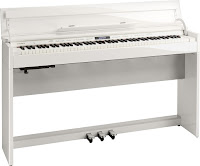 Roland has tried to emulate the Steinway Concert grand piano sound over the years and that’s what they have tried to do here with these new digital pianos much the same way as the real thing does. Having this kind of modeling technology is supposed to give the player an approximation of Steinway grand sound characteristics without the large size and expense of that acoustic piano. An example of the new Roland sound is when you press any one key on the Roland piano without having any additional reverb or sound effects on, that one note will also trigger natural occurring “overtones” for that specific note that you would normally and naturally hear in a real piano. Also, just when a person thought that 256-note polyphony processing power for the piano sound was a lot, the new Roland physical modelling technology has jumped that polyphony number up to unlimited polyphony.
Roland has tried to emulate the Steinway Concert grand piano sound over the years and that’s what they have tried to do here with these new digital pianos much the same way as the real thing does. Having this kind of modeling technology is supposed to give the player an approximation of Steinway grand sound characteristics without the large size and expense of that acoustic piano. An example of the new Roland sound is when you press any one key on the Roland piano without having any additional reverb or sound effects on, that one note will also trigger natural occurring “overtones” for that specific note that you would normally and naturally hear in a real piano. Also, just when a person thought that 256-note polyphony processing power for the piano sound was a lot, the new Roland physical modelling technology has jumped that polyphony number up to unlimited polyphony.
There is no limit because of the way the sound is generated in the virtual physical world. However, the 256-note polyphony (and even less polyphony) in other name brand pianos is way more than enough to power even some of the most complex piano music that a person can play. The unlimited polyphony on the Roland pianos is for the acoustic piano sounds only but not for the non-acoustic piano instruments such as electric pianos, strings, organs, choirs, brass, etc. Those sounds offer 384-note polyphony which is also more than the other brands do, but once again, not something that you’ll actually notice when playing these instrumental sounds.
Also, polyphony power has nothing to do with the actual instrument sound samples and the authenticity of those tones. However, when you combine that polyphony power along with a 3-sensor key action, the musical expression and dynamic tonal & volume range you get in these new pianos is impressive. From very soft pianissimo to extra loud forte volume. these new pianos go beyond what a person might otherwise expect out of a digital piano.
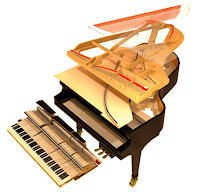 |
| Physical Modeling Virtual Technology |
differences to really matter. But at the end of the day the new DP603 will do a fairly nice job when it comes to acoustic piano sound realism in a digital piano furniture cabinet in the $2500 price range…although as I said, it’s certainly not perfect and there are a couple of noticeable piano sound and pedaling anomalies (at least they are noticeable to me) which I do not hear when playing on real acoustic pianos and may possibly bother some discerning piano people. The Physical Modeling technology still has a long way to go but perhaps someday Roland will perfect it…we’ll have to wait and see.
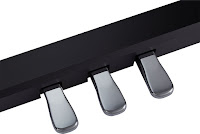 I did want to mention something about pedaling and the fact that without proper pedaling response and reproduction, the pedal movement, sound, & sustain that occurs from pedaling, especially with the right damper pedal, would not be nearly as enjoyable and could even create some poor pedaling habits. The right damper pedal is critical for allowing the music that you play on a piano sound good. The right pedal produces the sustain which holds the notes for a duration of time after you play the key(s) while the right pedal is held down. Physically it’s a fairly simple process
I did want to mention something about pedaling and the fact that without proper pedaling response and reproduction, the pedal movement, sound, & sustain that occurs from pedaling, especially with the right damper pedal, would not be nearly as enjoyable and could even create some poor pedaling habits. The right damper pedal is critical for allowing the music that you play on a piano sound good. The right pedal produces the sustain which holds the notes for a duration of time after you play the key(s) while the right pedal is held down. Physically it’s a fairly simple process overall pushing down the pedal and playing the notes, but in reality the process is much more complex as far as what you will actually hear and experience when doing that.
overall pushing down the pedal and playing the notes, but in reality the process is much more complex as far as what you will actually hear and experience when doing that. A lot of people say to me “I don’t want or need a lot of extra instrument sounds, so if the piano just has some great piano tones, key action, and pedaling, then that’s my main focus.” As a piano teacher and pro musician I totally understand and agree with that, to a point, but there are some good reasons to have all of those extra instrument sounds on the piano such as being able to make a multitrack, multi-instrument recording or using what is called “General MIDI” song playback. All Roland piano models can play back General MIDI song files from a USB flashdrive which is a great feature and one I use quite often in my studio for song learning and teaching.
A lot of people say to me “I don’t want or need a lot of extra instrument sounds, so if the piano just has some great piano tones, key action, and pedaling, then that’s my main focus.” As a piano teacher and pro musician I totally understand and agree with that, to a point, but there are some good reasons to have all of those extra instrument sounds on the piano such as being able to make a multitrack, multi-instrument recording or using what is called “General MIDI” song playback. All Roland piano models can play back General MIDI song files from a USB flashdrive which is a great feature and one I use quite often in my studio for song learning and teaching.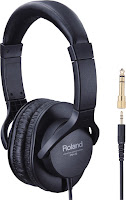 A lot of people use headphones when they are playing a digital piano for private practice so that other people in the room/house are not disturbed. This is obviously something you cannot do with a standard acoustic piano and therefore is a very big reason why people buy digital pianos…to play in privacy. Let’s face it, when someone in the house wants to practice their lesson or just wants to play for pleasure and there are other people in the home who are talking or watching TV, etc, it can cause a conflict. So using headphones for piano playing allows for more time playing the piano and if that can happen then I am all for it! On the new Roland pianos there is a special “3D effect” built into the piano headphone circuitry that will go through stereo headphones which can make using headphones even more enjoyable.
A lot of people use headphones when they are playing a digital piano for private practice so that other people in the room/house are not disturbed. This is obviously something you cannot do with a standard acoustic piano and therefore is a very big reason why people buy digital pianos…to play in privacy. Let’s face it, when someone in the house wants to practice their lesson or just wants to play for pleasure and there are other people in the home who are talking or watching TV, etc, it can cause a conflict. So using headphones for piano playing allows for more time playing the piano and if that can happen then I am all for it! On the new Roland pianos there is a special “3D effect” built into the piano headphone circuitry that will go through stereo headphones which can make using headphones even more enjoyable. The speaker/audio system in each model is very impressive because Roland is using newer audio technology not previously available on their pianos before. The best way for me to explain this is by referring to light bulbs. Most people know that saving electric energy and consuming less is the best way to go. The recent changes to light bulb technology now allows for a powerful bright light bulb which uses far less energy because of the new LED technology. So basically this means that instead of using 60 watts of power (per hour) to get 60 watts of light bulb brightness, the new LED bulbs use approx 14 watts of power to get 60 watts of brightness…and those new light bulbs last much longer because they are not using as much power as before.
The speaker/audio system in each model is very impressive because Roland is using newer audio technology not previously available on their pianos before. The best way for me to explain this is by referring to light bulbs. Most people know that saving electric energy and consuming less is the best way to go. The recent changes to light bulb technology now allows for a powerful bright light bulb which uses far less energy because of the new LED technology. So basically this means that instead of using 60 watts of power (per hour) to get 60 watts of light bulb brightness, the new LED bulbs use approx 14 watts of power to get 60 watts of brightness…and those new light bulbs last much longer because they are not using as much power as before.
 Another new technology now being put into these new Roland pianos is Bluetooth device connectivity. Bluetooth in digital pianos is relatively new and encompasses a number of separate features. So when you hear the word “Bluetooth” in digital pianos, it doesn’t mean they all do the same thing or can do everything associated with the Bluetooth technology. The Roland Bluetooth abilities include BT audio streaming so that you can hear the music from your Bluetooth capable external device (tablet, cell phone, computer, etc) such as iTunes come through the piano speaker system. Another Bluetooth feature is MIDI streaming connectivity so that you can interact with Bluetooth capable apps or programs such as Garage Band for iPad which is a great MIDI music and recording app.
Another new technology now being put into these new Roland pianos is Bluetooth device connectivity. Bluetooth in digital pianos is relatively new and encompasses a number of separate features. So when you hear the word “Bluetooth” in digital pianos, it doesn’t mean they all do the same thing or can do everything associated with the Bluetooth technology. The Roland Bluetooth abilities include BT audio streaming so that you can hear the music from your Bluetooth capable external device (tablet, cell phone, computer, etc) such as iTunes come through the piano speaker system. Another Bluetooth feature is MIDI streaming connectivity so that you can interact with Bluetooth capable apps or programs such as Garage Band for iPad which is a great MIDI music and recording app.But for many people that is just fine and the fact is you’ll still be properly connected with your Roland piano. Last but not least, Roland has developed a new Piano Partner 2 Bluetooth app that allows wireless BT connection so that you can access the sheet music to songs built into the DP603 as well as some educational note/sight reading digital flashcards in the app. Also, there are some interactive auto-accompaniment features generated by the app such as drum rhythm patterns and one-man band chord arrangement styles which you control by playing chords on the piano and hearing that accompaniment come through your piano as you play a melody and chords. It’s fun and engaging and can make you sound better than you are:).
 Speaking of connectivity, the DP603 (just like the home cabinet models above it) have good connectivity to external devices with outputs and inputs including dual headphone jacks, stereo mini input audio jack to connect tablets, computers, iPod, etc to hear audio through the piano, two 1/4″ audio output jacks for stereo connectivity with external sound systems, USB flashdrive input, and USB output to device. This kind of connectivity is generally sufficient to meet most needs although all the jacks themselves are located just under the left front of the pianos. This is fine for some connections but I would have much preferred to see the audio input and output jacks along with the USB output located on the back of the piano like most of the other brands do. It would be the more practical position for those connector jacks in my opinion, but perhaps Roland had a reason for locating all of them up front underneath the piano…maybe it was less money for them to do it that way…but I don’t like it near as much as on the back for those specific connectors.
Speaking of connectivity, the DP603 (just like the home cabinet models above it) have good connectivity to external devices with outputs and inputs including dual headphone jacks, stereo mini input audio jack to connect tablets, computers, iPod, etc to hear audio through the piano, two 1/4″ audio output jacks for stereo connectivity with external sound systems, USB flashdrive input, and USB output to device. This kind of connectivity is generally sufficient to meet most needs although all the jacks themselves are located just under the left front of the pianos. This is fine for some connections but I would have much preferred to see the audio input and output jacks along with the USB output located on the back of the piano like most of the other brands do. It would be the more practical position for those connector jacks in my opinion, but perhaps Roland had a reason for locating all of them up front underneath the piano…maybe it was less money for them to do it that way…but I don’t like it near as much as on the back for those specific connectors.
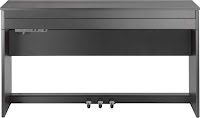 I do like the compact nature, size, and design of the DP603 and the cabinet color options are quite nice. But aside from the cabinet colors and finishes and the fact that the DP603 polished ebony or white comes with a nice full size matching bench, all DP603’s are the same otherwise. The dimensions of the DP603 are 55″x 15″x 39″ high (with the lid opened). With the lid closed flat the piano is only 31″ high. The weight of the DP603 is somewhere between 102 lbs and 106 lbs depending on the finish, so it’s fairly light but heavy enough that you would not want to move it too often. One important thing to know about the DP603 is that it is not considered a portable digital piano because the piano cannot be played without the furniture stand & pedals that come with it. So if you need something that you can take with you easily, the DP603 would not be a good choice in my opinion.
I do like the compact nature, size, and design of the DP603 and the cabinet color options are quite nice. But aside from the cabinet colors and finishes and the fact that the DP603 polished ebony or white comes with a nice full size matching bench, all DP603’s are the same otherwise. The dimensions of the DP603 are 55″x 15″x 39″ high (with the lid opened). With the lid closed flat the piano is only 31″ high. The weight of the DP603 is somewhere between 102 lbs and 106 lbs depending on the finish, so it’s fairly light but heavy enough that you would not want to move it too often. One important thing to know about the DP603 is that it is not considered a portable digital piano because the piano cannot be played without the furniture stand & pedals that come with it. So if you need something that you can take with you easily, the DP603 would not be a good choice in my opinion.
 We also recommend that you take a look at the new Korg G1 Air compact furniture cabinet digital piano which is a very impressive model and quite a bit less money at $1999. But don’t be fooled by the lower price range because in my opinion it has much better grand piano sounds than the Roland DP603, more powerful speaker system, and the key action is very responsive. Check that one out at my Korg G1 Air review at the following link: Korg G1 Air Review
We also recommend that you take a look at the new Korg G1 Air compact furniture cabinet digital piano which is a very impressive model and quite a bit less money at $1999. But don’t be fooled by the lower price range because in my opinion it has much better grand piano sounds than the Roland DP603, more powerful speaker system, and the key action is very responsive. Check that one out at my Korg G1 Air review at the following link: Korg G1 Air ReviewIf you want more info on new digital pianos and LOWER PRICES than internet discounts, please email me at tim@azpianowholesale.com or call direct at 602-571-1864.
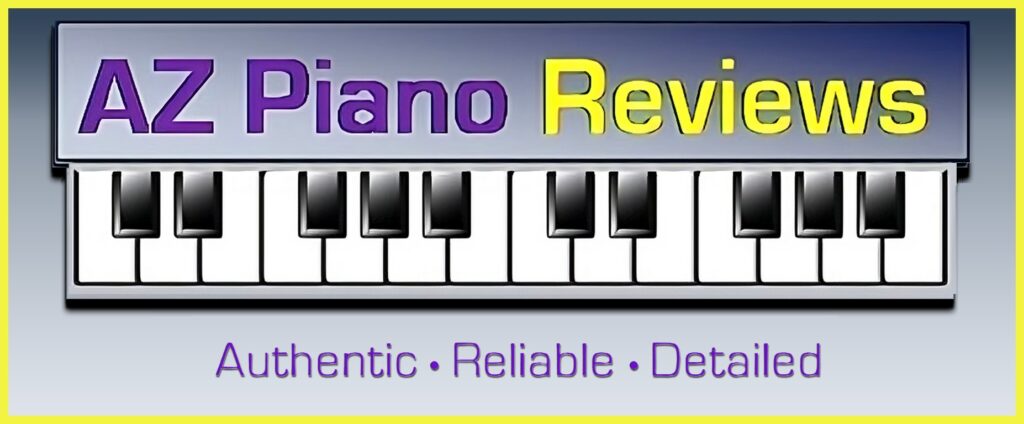









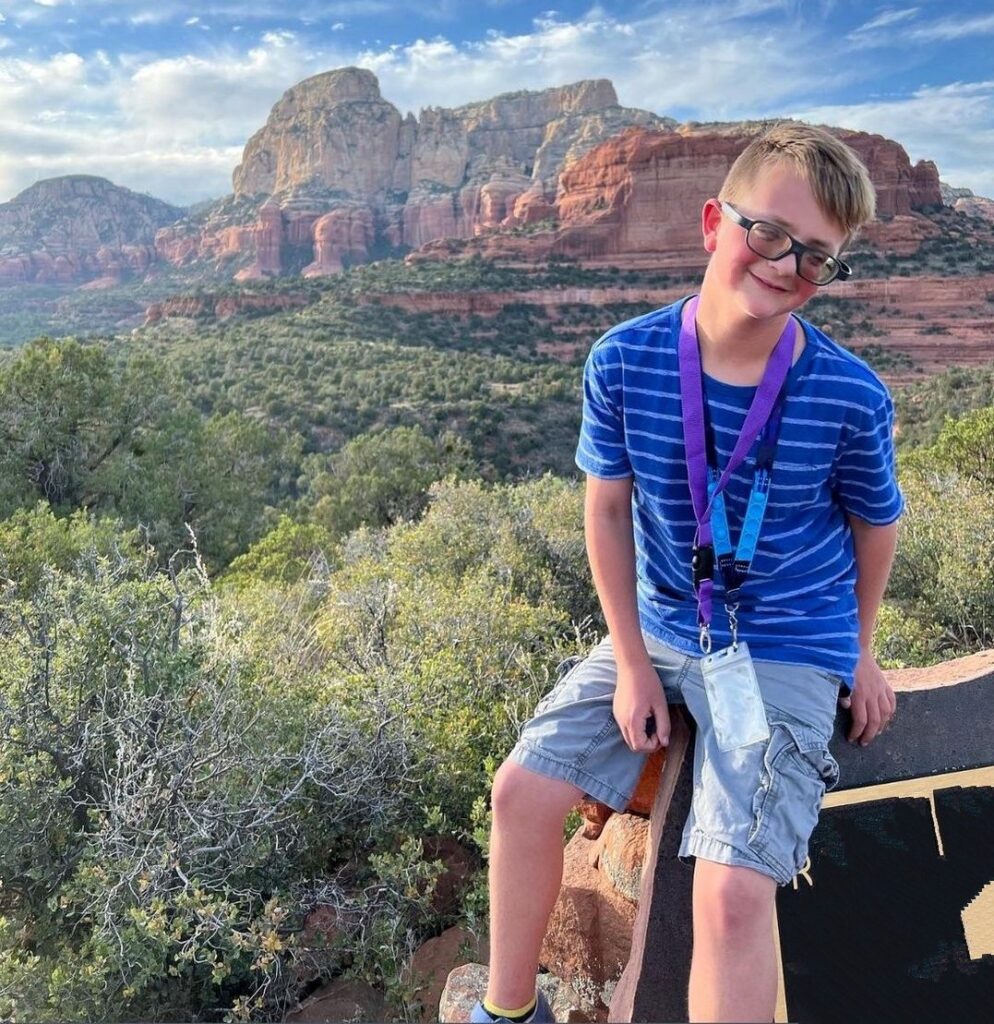
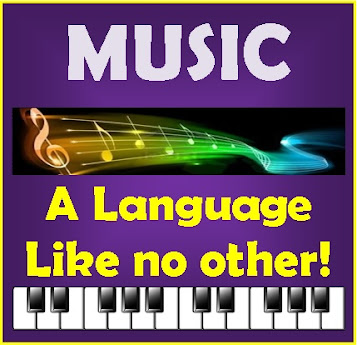
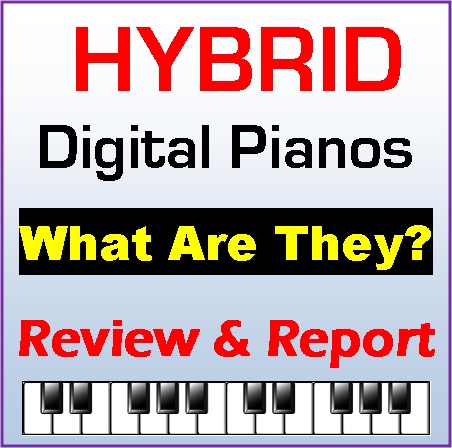
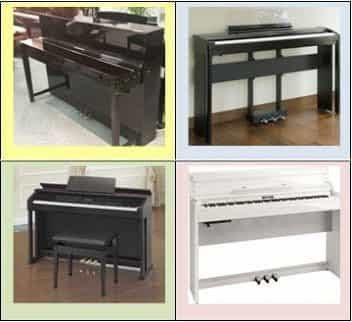
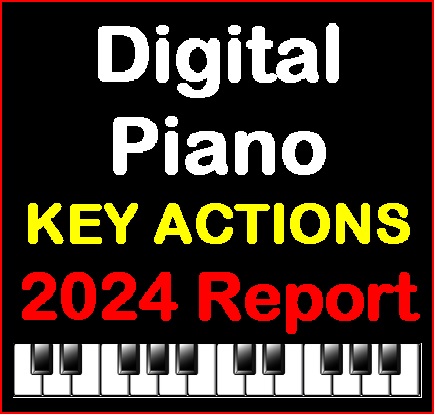
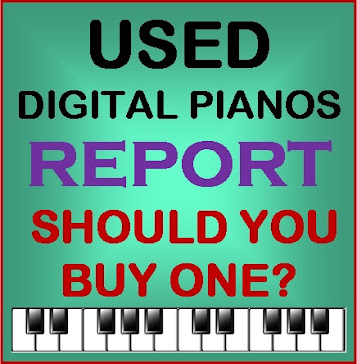
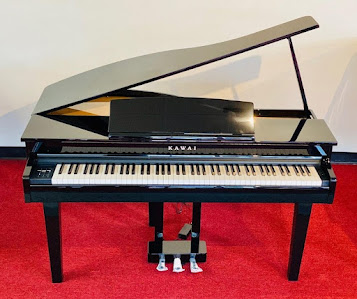
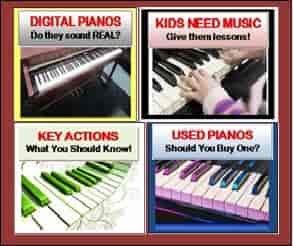
I notice that you say the DP603 comes with "interactive auto-accompaniment features such as drum rhythm patterns and one-man band chord arrangement styles" but also that "this new Roland has no built-in drum patterns/beats, no auto-accompaniment interactive chords".
Is this a contradiction? Or is there some difference in those things? Thanks.
the auto-accompaniment features are generated by the Roland Piano Partner2 app, not the piano. If you have more questions or are looking to purchase one, please email me direct.
actually I like both and they are different from each other just as a Kawai acoustic piano action would be different from a Yamaha or Steinway acoustic piano key action. They are just different in terms of weight, movement, and response.
Great in depth review thanks!
Are there manny differences between the DP603 & the DP90se?
Is this worth upgrading from the DP90se?
In my opinion, no.
yes there are many differences and upgrades between the new DP603 vs the DP90Se including piano sound chip, key action, pedaling response, some digital features, as well as audio output power. However the DP90Se was a very good and enjoyable piano to play and had high quality components.
I'd love to know this as well!
How does this keyboard compare with the concert keyboard on the DP90Se?
Thanks for the info.
Tim. Please help me understand this better. I am trying to narrow down my next digital piano and the new models make it really confusing. The Roland DP603 replaces both the DP90e AND the DP90se ? The DP90se had the much better keyboard than the DP90e. But both the 90e & 90se were more expensive (before being discontinued) than what the new DP603 is listed for online. So does that mean that the new DP603 has the same Concert keyboard the DP90se had ? Or just the Premium keyboard the DP90e had ? Please advise. Thanks. Still deciding, but want to contact you about a price before actually ordering anything.
Great review. What are the differences between DP603 and HP605? Specifically is there a future that DP603 has but HP605 missing?
Thanks
The DP603 has the all new PHA50 action, which is an upgrade from both the DP90se and DP90e. The PHA50 is currently the highest level action that Roland offers and is the same action that is in the top of the line LX17. It also has the same sound chips as the LX17, so basically you are getting the guts of an LX17 for one third the price. You just don't have the fancy upright cabinet and high-tech speaker system of the LX17.
The DP603 has the all new PHA50 action, which is an upgrade from both the DP90se and DP90e. The PHA50 is currently the highest level action that Roland offers and is the same action that is in the top of the line LX17
Thank you for the fantastic review. I went to a local piano dealership expecting to walk out with a Yamaha Arius 163 or a CLP 535/545 and everything changed when I played the new Roland Models (DP603/HP603/HP605). All this time, I thought Yamaha made the best digital pianos but I was very wrong. What are your thoughts on the new Roland DP603/HP603/HP605 in comparison to the Casio AP650/AP700. They are similarly priced and both brands are well known. Is there one brand that has a distinct advantage over the other to make my decision more easy or does it really come down to which one feels right to a particular individual?
Yes, the DP603's feature is that it is *compact size*. HP605 is bigger, full cabinet size and has a more powerful sound system. Check the pics and you'll see the difference.
If I like a lighter action…which would be lighter…the Kawai ES8….or the Roland DP603?
I have compared those two piano models and their key actions side by side. The Roland DP603 has more/firmer "upweight" response/pressure in the keys as compered to the Kawai ES8. This situation makes it so that you would have to press down on the Roland keys with more finger strength to compensate for the keys pushing back up with more energy. In other words, the Kawai takes a bit less strength and energy to press the keys down than on the Roland DP603 so it could be said that the Kawai ES8 has a lighter key action than the Roland DP603.
I am looking to get the new Roaldn Kiyola KF-10. Could you advise on how to get at a cheaper price?
does anybody know how the backside of the white roland dp603 looks like?
Nice writeup, thanks, just ordered the 603.
I just bought a Roland I think HP 607 – may have been GP last week. Will postpone delivery until I do more research. Is GP any good? HP? I am an accomplished pianist but have had a p85 for 12 years so almost anything is an upgrade. The thing is, I also noticed the midrange sustain problem. When I recorded just a bit on it, the playback sounded strange, unless it was just my touch. Also when I heard a blind test yesterday online, I rather like the sound of the Yamaha CLP 635. Now the P515 might serve my needs as a songwriter, since my chief goal is to record and notate my songs with at least drums and bass where needed. Perhaps just a demo, but need to do get it started. Your thoughts on this please? I need help.
Thank you so much for this thorough review. I bought a Roland 607 last week and am having second thoughts. I can't remember- it may have been GP. Is that terrible? I am accomplished pianist and want to be able to play virtuous pieces, but also a songwriter, and want to record my songs. The Yamaha P515 sounds good for this.
Hi Guys, How would this Piano differ from the Roland F140? Is it a better sound and keyboard? Is it worth changing?
Darren